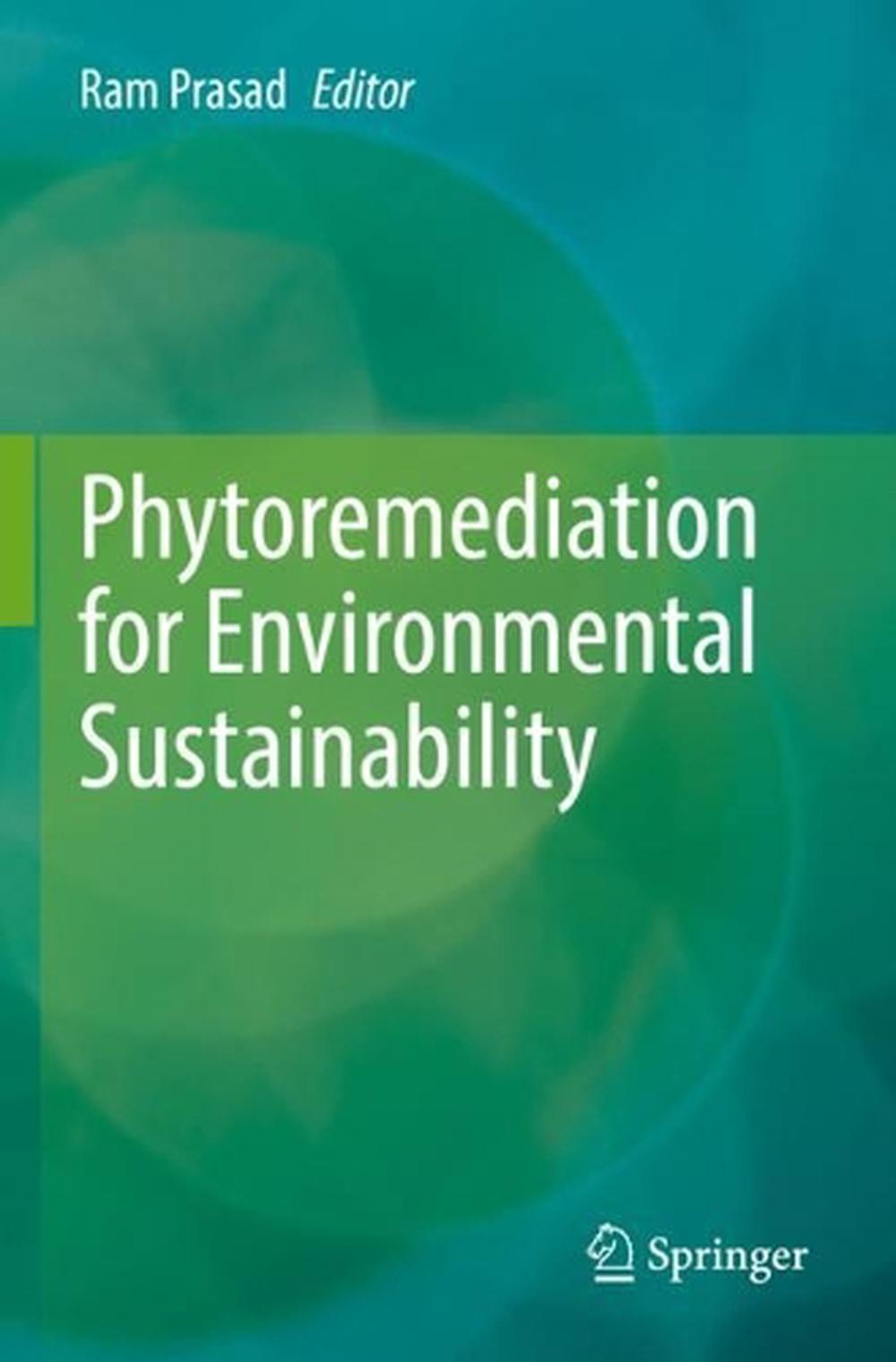
Phytoremediation for Environmental Sustainability
by Ram Prasad
This edited book details the plant-assisted remediation methods, which involves the interaction of plant roots with associated rhizospheric microorganisms for the remediation of soil and water contaminated with high levels of heavy metals, pesticides, radionuclides, agricultural by-products, municipal wastes, industrial solvents, petroleum hydrocarbons, organic compounds, and various other contaminants. Each chapter highlights and compares the beneficial and economical alternatives of phytoremediation to currently practiced soil, water, and air removal. This book covers state-of-the-art approaches in phytoremediation contributed by leading and eminent scientists from across the world. Phytoremediation approaches for environmental sustainability dealing the readers with a cutting-edge of multidisciplinary understanding in the principal and practical approaches of phytoremediation from laboratory research to field application. This book is of interest to researchers, teachers, environmental scientists, environmental engineers, environmentalists, and policy makers. Also, the book serves as additional reading material for undergraduate and graduate students of environmental microbiology, biotechnology, eco-toxicology, environmental remediation, waste management, and environmental sciences as well as the general audience.
Paperback
Brand New
Author Biography
Ram Prasad, Ph.D., is associated with the Department of Botany, Mahatma Gandhi Central University, Motihari, Bihar, India. His research interest includes applied and environmental microbiology, plant-microbe-interactions, sustainable agriculture, and nanobiotechnology. Dr. Prasad has more than two hundred fifteen publications to his credit, including research papers, review articles and book chapters, and five patents issued or pending, and edited or authored several books. Dr. Prasad has 12 years of teaching experience and has been awarded the Young Scientist Award and Prof. J.S. Datta Munshi Gold Medal by the International Society for Ecological Communications; FSAB fellowship by the Society for Applied Biotechnology; the American Cancer Society UICC International Fellowship for Beginning Investigators, USA; Outstanding Scientist Award in the field of microbiology by Venus International Foundation; and BRICPL Science Investigator Award and Research Excellence Award. He hasbeen serving as editorial board member of BMC Microbiology, BMC Biotechnology, IET Nanobiotechnology, Archives of Phytopathology and Plant Protection, Phyton-International Journal of Experimental Botany, Journal of Renewable Materials, and Biocell, including series editor of Nanotechnology in the Life Sciences, Springer Nature, USA. Previously, Dr. Prasad served as assistant professor at Amity University Uttar Pradesh, India; visiting assistant professor, Whiting School of Engineering, Department of Mechanical Engineering, Johns Hopkins University, Baltimore, USA; and research associate professor at the School of Environmental Science and Engineering, Sun Yat-sen University, Guangzhou, China.
Table of Contents
Chapter 1. Metal hyperaccumulator plants and their role in phytoremediation.- Chapter 2. Role of soil microflora in phytoremediation of heavy metal contaminated soils.- Chapter 3. Phytoremediation of heavy metal contaminated soil and water.- Chapter 4. "Effective removal of radioactive waste from environment using plants.- Chapter 5. Phytoremediation of Heavy Metals and Radionuclides: Sustainable Approach to Environmental Management.- Chapter 6. Remediation technologies, from incineration to phytoremediation: the rediscovery of the essential role of soil quality.- Chapter 7. Morphology and physiology of plants growing on highly polluted mining wastes.- Chapter 8. Potential impacts of climatic stress on the performance of phyto-bioremediation techniques.- Chapter 9. Invasive Alien Plant Species: An Exploration of Social Aspect and Phytoremediation Acceptability.- Chapter 10. Phytotechnologies for bioremediation of textile dye wastewater.- Chapter 11. Assessment of pharmaceuticals in water systems: Sustainable phytoremediation strategies.- Chapter 12.Fluoride (F) remediation using phytoremediation and nanomaterials.- Chapter 13. Sustainable use of African palm shell waste applied to paraben adsorption from aqueous solutions.- Chapter 14. Removal of indoor environmental pollutants VOCs: Phytoremediation applications and adsorption studies using immersion calorimetry.- Chapter 15. Phytoremediation: A tool for environmental sustainability.- Chapter 16. Role of phytoremediation as a promising technology to combat environmental pollution.- Chapter 17. Exploring the potential of PGPR in Phytoremediation.- Chapter 18. Phycoremediation: Treatment of Pollutants and an Initiative Towards Sustainable Environment.- Chapter 19. Phytoremediation: Mechanistic approach for eliminating heavy metal toxicity from environment.
Details

